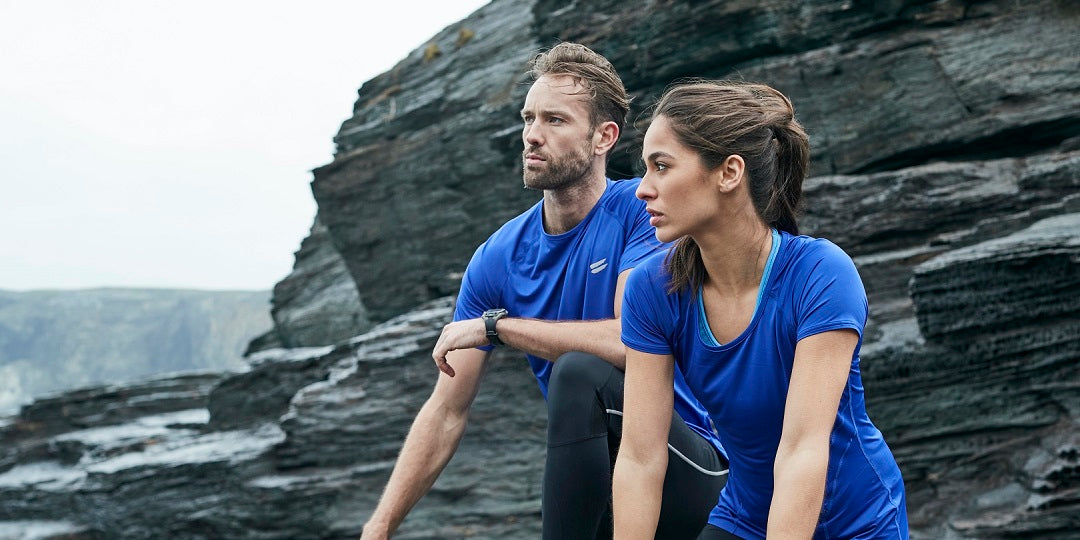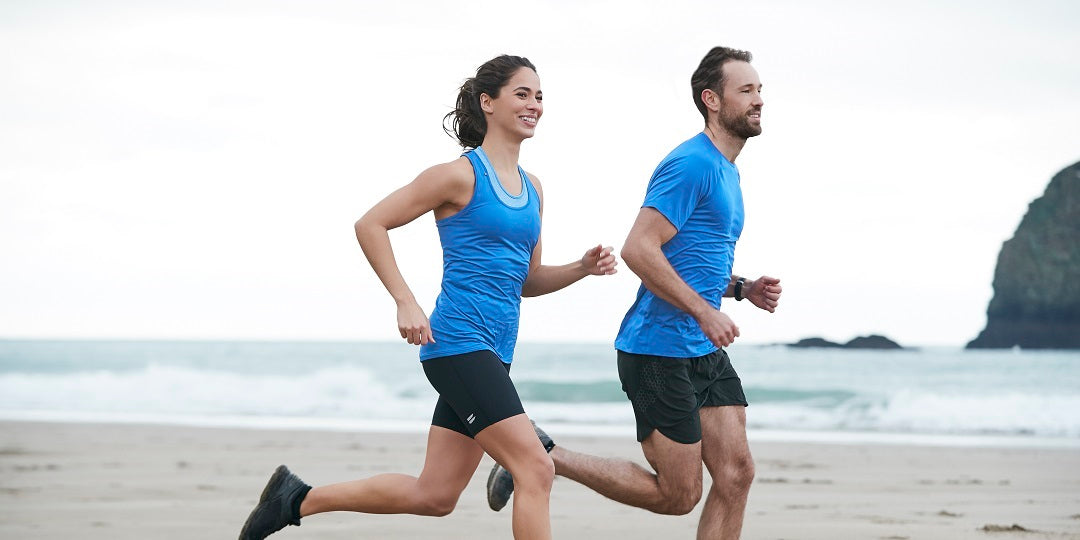Wicking is an essential feature of all Tribesports sportswear - the action of drawing moisture away from the skin in order to keep the skin dry and comfortable to optimise performance, but how does it work?
First off, it's worth us pointing out the key differences between what makes technical sports fabric in comparison to your typical t-shirt or tank top...

T-shirts will typically be made of cotton - whilst it may be comfortable on the skin, it may have a funky graphic - it will get heavy and clingy when wet

Technical fabrics will generally be made of a synthetic fibre blend, for example polyester - this gives a lightweight final product which will stretch with movement, dry quickly and maintain its shape. You can read more about how fabric is manufactured here.
what is wicking?
"Wicking is the ability of a fibre to transfer moisture from one section to another. Usually the moisture is moved along the fibre surface but it may also pass through the fibre when a liquid is absorbed by the fibre." - J. J. Pizzuto's Fabric Science
How does wicking technology work?
Wicking is all in the physics:
Increased surface area will increase the absorption of moisture away from the skin and increase the rate of evaporation from fabric to the air.
Polyester - the synthetic material that most of Tribesports products are made from - is hydrophobic - it repels water and, while it's not waterproof, a polyester based fabric will channel water along the fibres whereas cotton fibres will absorb water. When the knit of the fabric uses very fine fibres (as technical sportswear does) this hydrophobic property of polyester works to enhance wicking by providing more channels for the moisture to move along.
Put simply, the technical wicking treatment in the fabric pulls moisture away from the skin to the outer layer of the fabric for quick drying as you workout.
How is the surface area increased to speed up the drying process?
Fabrics are treated with wicking agents which, combined with the knit of fine hydrophobic fibres, creates a capillary system to increase the surface area (much like your own body's blood vessel system). These capillaries diffuse the highly concentrated areas of moisture to lower concentrated areas in order to increase the rate of evaporation away from the fabric.
Note in these 2 photos, one is wearing a cotton tank top which has one concentrated sweat patch, compared with the technical fabric in the other photo which has spread to a thinner layer of sweat over a larger surface area:
The top on the left is a cotton tank top after a CrossFit session, the top on the right is a Tribesports Performance Tech Tee after an indoor dragonboat training session. Both have had a nice and sweaty training session however the cotton tank has one clear area of sweat whereas the tech tee has a thinner layer of moisture across more of the fabric, creating a bigger surface area for evaporation.
Is wicking technology limited by any factors?
Whilst wicking fabrics will out perform non-wicking materials in most situations, they will not work as effectively when worn underneath a waterproof shell - this is because the waterproof shell will trap the moisture and prevent evaporation into the air.
Key features to look for in moisture management sportswear:
When purchasing sportswear, you should look out for moisture management features such as:

Lightweight polyester blends
These fabrics will have wicking properties, bear in mind the weight of the fabric because heavier material will use thicker fibres which often have less wicking potential.

Zoned ventilation
There are key workout heat zones on the body which will produce more sweat than others, choosing sportswear with increased ventilation (such as the strategically placed power-mesh panels on the Tribesports apparel) in these areas will improve your moisture management when working out.

Close fitting design
Wicking properties are optimised when the capillary network of the fabric sits close to the skin, this is one of the reasons why getting the right fitting sports top will get you the most from it's technical qualities.
So - that's how technical wicking treatments work in performance fabrics - stay tuned - we'll be bringing you more insights on technical sportswear to cut through the jargon and help you make the most educated decisions when it comes to choosing your sportswear.








Ahmed mohamady
December 11, 2016
is there relation between walkability and wettability?